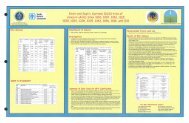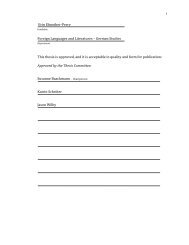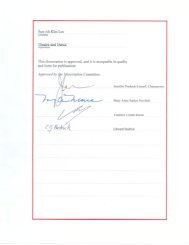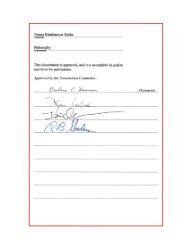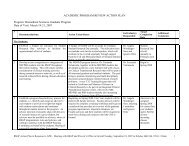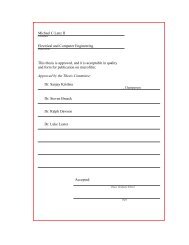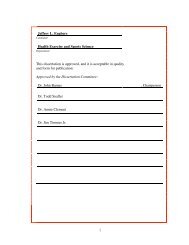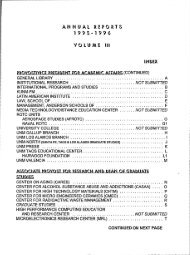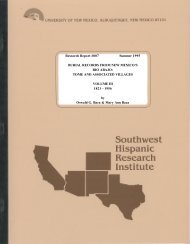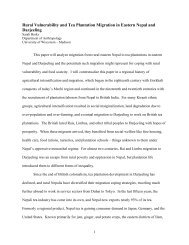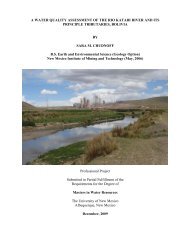Selective Salt Recovery from Reverse Osmosis Brine - University of ...
Selective Salt Recovery from Reverse Osmosis Brine - University of ...
Selective Salt Recovery from Reverse Osmosis Brine - University of ...
Create successful ePaper yourself
Turn your PDF publications into a flip-book with our unique Google optimized e-Paper software.
1.212 Selectivity Modeling<br />
The thermodynamic approach for predicting ion exchange selectivity is based on<br />
the fact that the change in Gibbs energy at equilibrium is equal to zero. Equation 6 shows<br />
the pertinent Gibbs energy calculation for a standard ion exchange reaction [8]. The<br />
terms in the equation are the chemical potentials <strong>of</strong> the ions in the solution and resin<br />
phases. These can be calculated for the solution phase using Equation 7 and for the resin<br />
phase using Equation 8 [8]. Resin phase partial molar excess free energies in Equation 8<br />
can be calculated using the concentrated electrolyte solution model. Equation 9 describes<br />
the calculation <strong>of</strong> the excess Gibbs free energy <strong>of</strong> the whole system which is then used to<br />
calculate the partial molar free energies in a two-component system by Equation 10 and<br />
Equation 11. The thermodynamic model <strong>of</strong> selectivity described previously and other<br />
similar methods work well as approximations <strong>of</strong> selectivity <strong>of</strong> a resin, but they do not<br />
take into account the specific qualities <strong>of</strong> the resin such as the degree <strong>of</strong> cross-linking<br />
[12]. Depending on the method used, they may not account well for the low activity <strong>of</strong><br />
ions in the solution and resin phases and the effects <strong>of</strong> different ionic ratios in solution.<br />
Other methods have been developed to deal with these parameters by including the<br />
swelling pressure due to high degrees <strong>of</strong> cross-linking and the low activity <strong>of</strong> water in<br />
highly concentrated solutions in the calculations [12, 13]. Marina et al, developed a<br />
model to predict selectivity based on the degree <strong>of</strong> cross-linking <strong>of</strong> the resin, the water<br />
activity <strong>of</strong> the solution, and the concentration ratio <strong>of</strong> the two counter-ions. He related<br />
these parameters to selectivity using Equation 12 where<br />
with regards to ions B and A,<br />
11<br />
B<br />
K A is the selectivity coefficient<br />
OB<br />
K A is the thermodynamic constant <strong>of</strong> ion exchange, y and<br />
y are the activity coefficients <strong>of</strong> the species in the resin and solution phases, respectively,<br />
π is the resin phase swelling pressure, and V is the partial molar volume. The activity<br />
coefficients are functions <strong>of</strong> water activity as shown by Equation 13 where a w is the<br />
water activity and σ is the total concentration <strong>of</strong> dissolved species in solution. The water<br />
activity is a function <strong>of</strong> swelling pressure, as shown by Equation 14 where Vw is the<br />
partial molar volume <strong>of</strong> water and a w and aw are the water activities in the solution and



